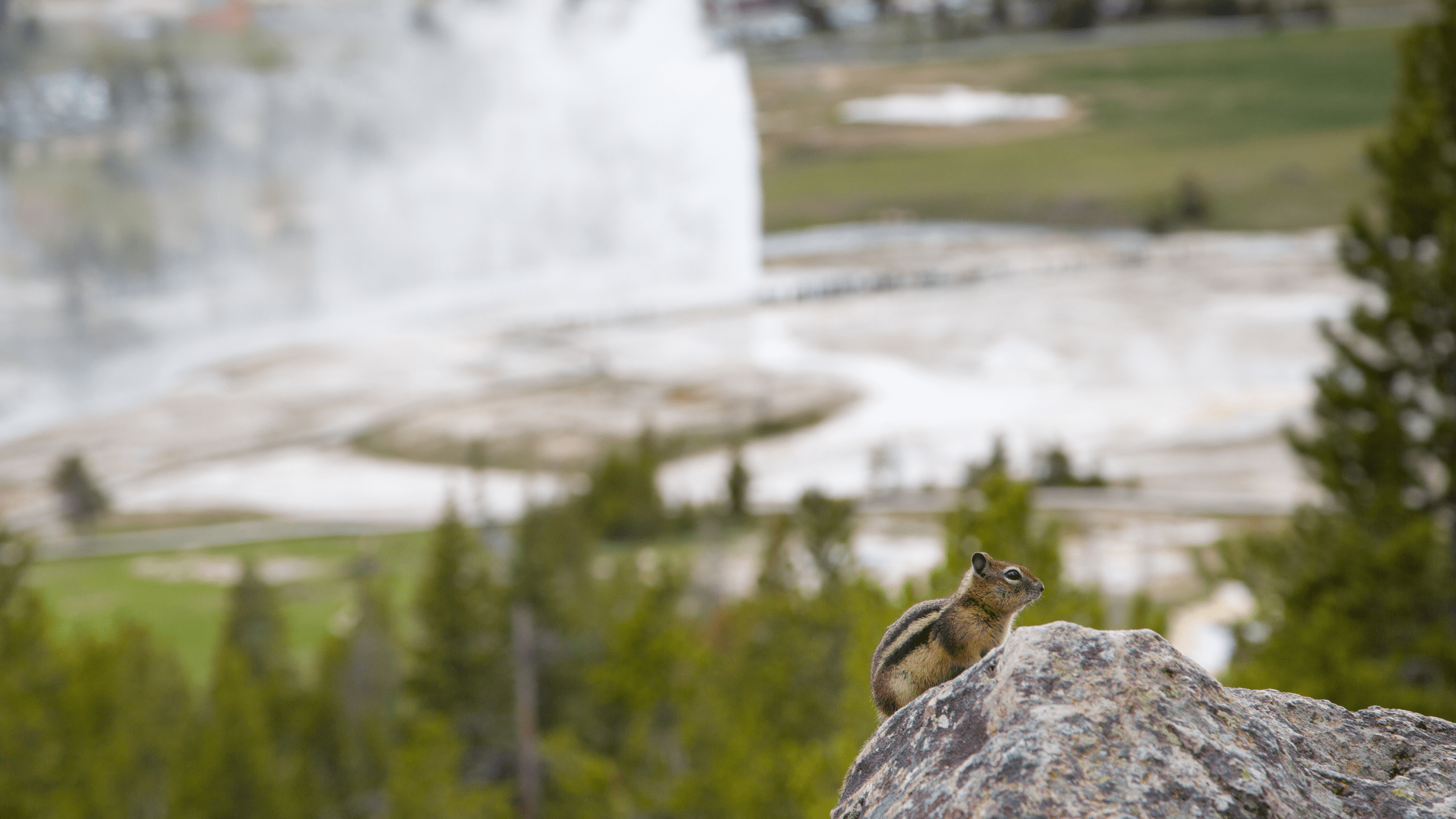Posted: March 6, 2022
Our Wildlife of the Week – 2022 Week 9, happens to be of the small variety.
Meet the “Least Chipmunk”!
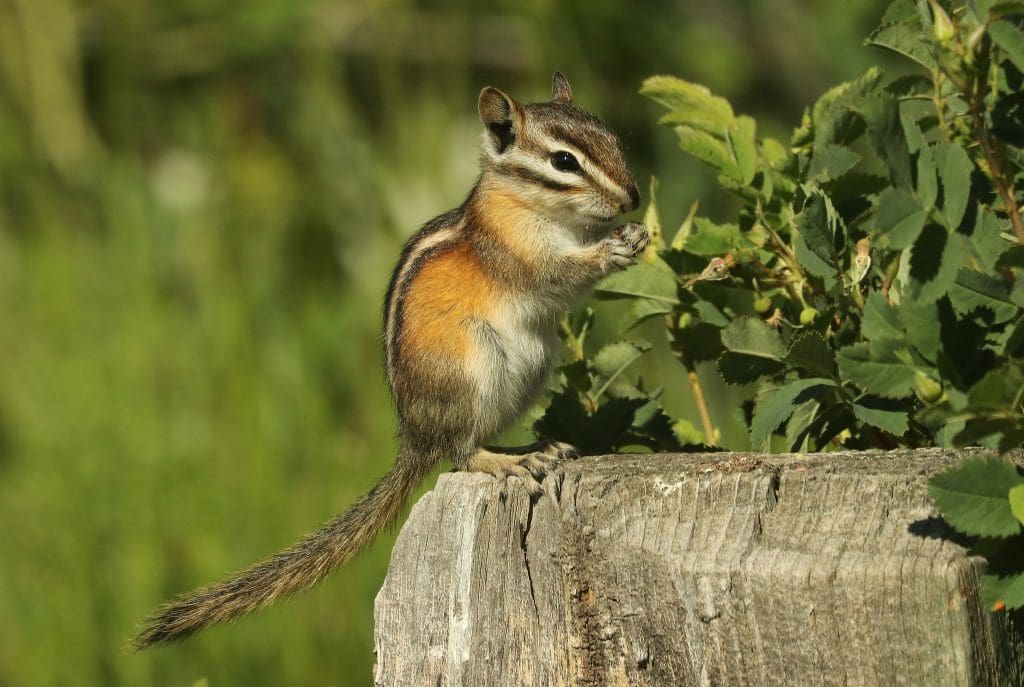
Least Chipmunk Physical Description
Least Chipmunks are the smallest of all chipmunks. Body length ranges from 185 to 222 mm. Individuals weigh between 42 and 53 g. Females are larger than males in some populations.1
There are three dark and two light stripes on the face and five dark and four light stripes along their sides. The middle stripe runs to the end of the tail. Dorsal background fur is orangish-brown, and ventral coloration is grayish-white. The tail is bushy and long, ranging from 81 to 95 mm, and is pale brown in color.1
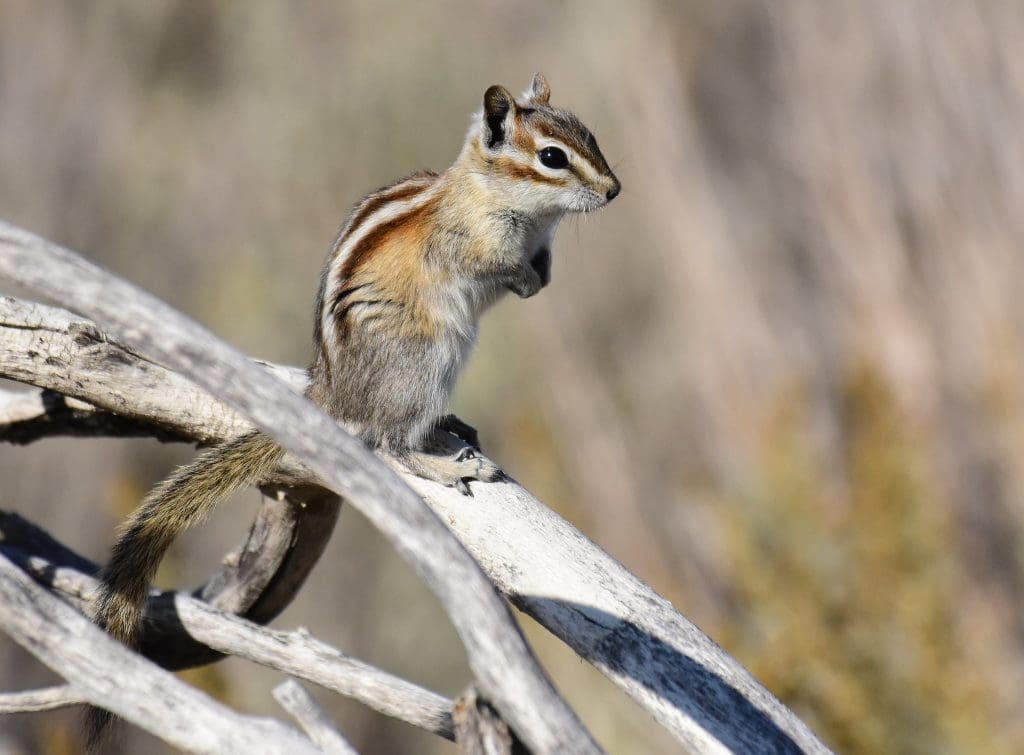
Because they hibernate, these chipmunks are heterothermic (having body temperature that varies with the environment2). However, their body temperature remains relatively constant over short spans of time. There is a lower body temperature when the animal is torpid than when it is active.1
SPONSORED ADVERTISEMENT
Least Chipmunk In Action
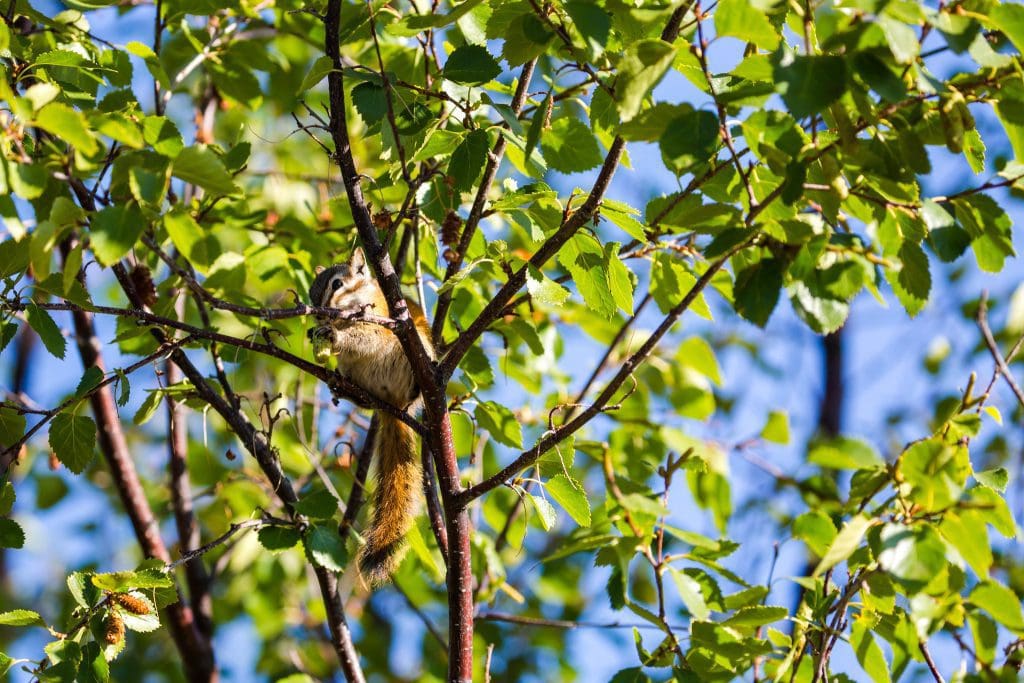
Least chipmunks are adept climbers. Some individuals construct nests high above the ground. Chipmunks climb trees in order to warm themselves in the sun during periods of cool weather.1
Least chipmunks are most active between April and October. Nests are built seasonally, with summer homes being constructed from leaves and bark in rotting logs and tree cavities. Winter nests are located in underground burrows that consist of dried grass, bark, fur, feathers and soft vegetation.1
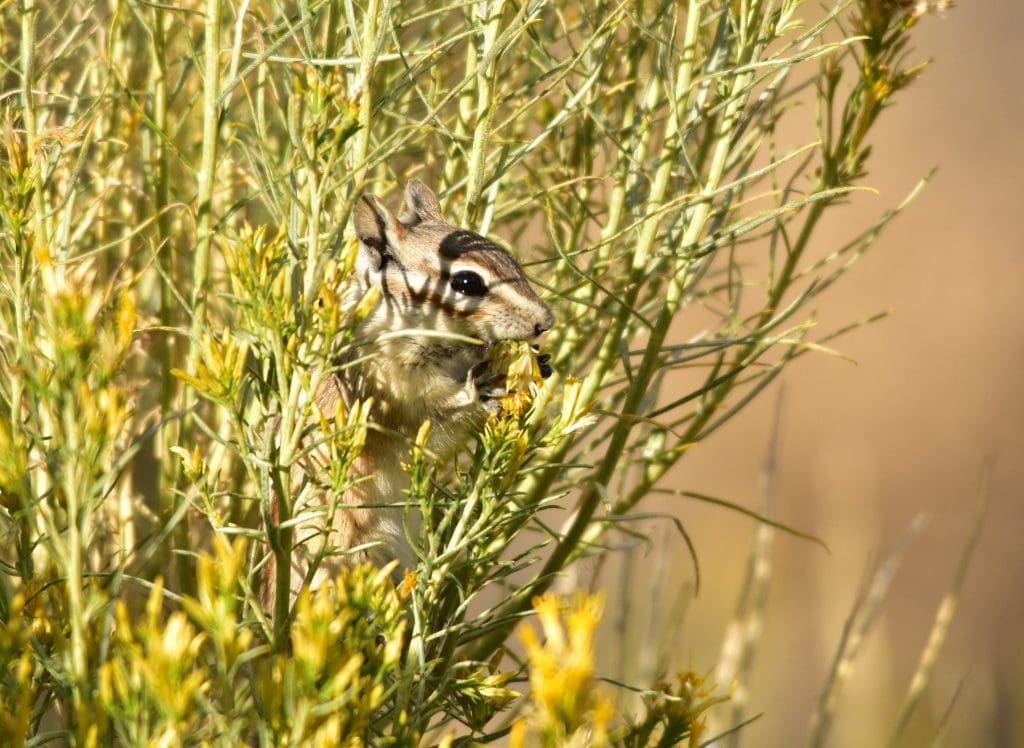
With the onset of cold weather, chipmunks retire to these burrows, where they enter torpor and live off stored food until spring. Hibernation in these animals is not as deep as it is in ground squirrels, and they awake frequently to snack on stored food during the winter months. Least chipmunks are territorial and will defend their nests from invaders.1
Least chipmunks are diurnal (of or during the day). In general, they are not social, except for mating and rearing young. However, when provisioned by humans, they are remarkably tolerant of conspecifics (members of the same species).1
SPONSORED ADVERTISEMENT
Where to Spot Least Chipmunks
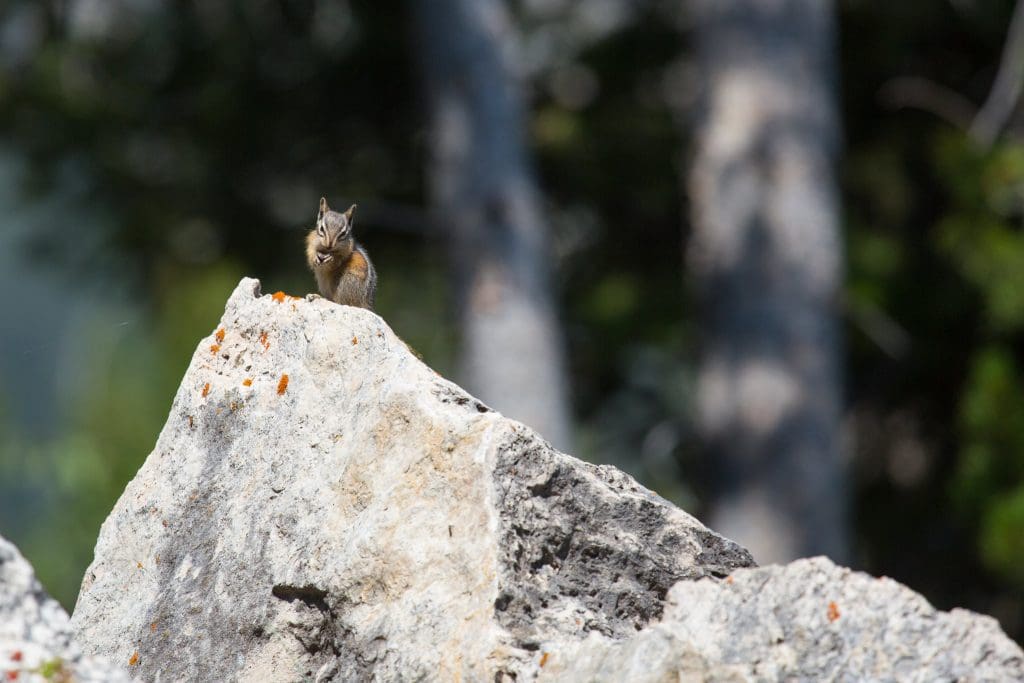
Least chipmunks are found throughout the boreal and temperate forests of North America. However, least chipmunks prefer more open areas such as forest edges and openings. They are also commonly found near rock cliffs, river bluffs, and open jack pine stands.1
The Least Chipmunk can be found in over 18 National Parks and many other National Park Service sites.3 Including:
- Badlands National Park
- Black Canyon of the Gunnison National Park
- Bryce Canyon National Park
- Canyonlands National Park
- Crater Lake National Park
- Grand Canyon National Park
- Grand Teton National Park
- Great Basin National Park
- Great Sand Dunes National Park and Preserve
- Mesa Verde National Park
- North Cascades National Park
- Rocky Mountain National Park
- Theodore Roosevelt National Park
- Voyageurs National Park
- Wind Cave National Park
- Yellowstone National Park
- Yosemite National Park
- Zion National Park
SPONSORED ADVERTISEMENT
Least Chipmunk Conservation Status
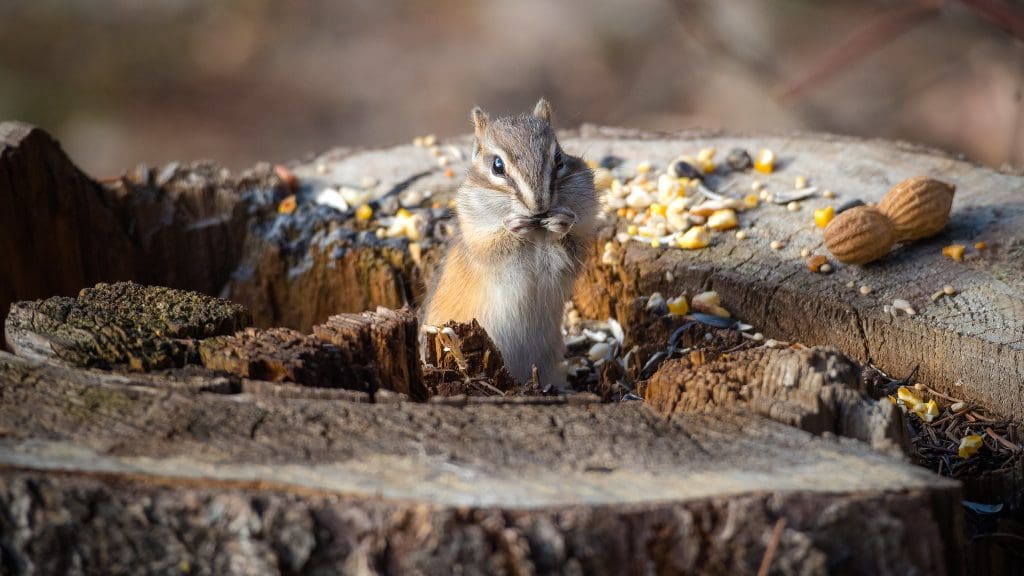
The primary threat to least chipmunks is habitat loss caused by the encroachment of humans. Hunting or trapping may also pose a small threat. Currently least chipmunk populations are steady.1
An important note on the Least Chipmunk, they have no significant negative impacts on humans, though they may occasionally be a nuisance to campers!1 So keep your eye out for these amazing little guys.
Least Chipmunk and You
Have you seen a Least Chipmunk in it’s natural environment? Tell us about it in the comments below!
Do you have a picture of these amazing little creatures? Share it on social media with us and tag us in your post.
Use the hashtag:
#WildlifeOfTheWeek.
Interested in Wildlife Photography???
Check out this amazing beginners guide from National Geographic:
National Geographic Photo Basics The Ultimate Beginner’s Guide to Great Photography
The above links are provided in this article as affiliate links. Meaning, at no additional cost to you, we’ll earn a commission if you click one and make a purchase. An easy way to help support us if you’re going to buy anyway!
Learn more about all the amazing wildlife in our National Parks and how to safely “Watch Wildlife” on this amazing page with lots of resources from the National Park Service!
Want tips for photographing wildlife? Check out this great article for tips from the National Park Service.
Help support Discover Our Parks by becoming a Patron for as little as $1 a month! Your support will help us continue to provide articles like this and add even more information about our parks to this site.
If you want to make a one-time donation, buy us a coffee!
‘We got some of the above information from the following:
1: Animal Diversity Web – Tamias Minimus – Least Chipmunk
2: Vocabulary.com – heterothermic
3: NPSpecies – Find Parks Where a Species is Found
Check out these recent posts from Discover Our Parks:
- The Isolated Black-bellied Salamander: Wildlife of the Week – 2023 Week 22
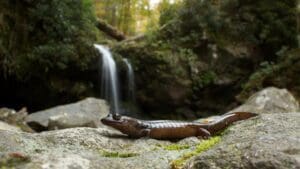
- The Splendid Sandhill Crane: Wildlife of the Week – 2023 Week 21
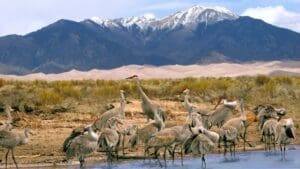
- The Promising Peregrine Falcon: Wildlife of the Week – 2023 Week 20
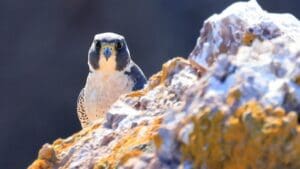
- The Intimidating Killer Whale: Wildlife of the Week – 2023 Week 19
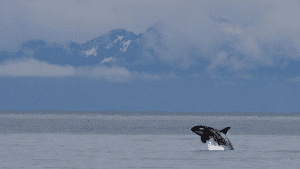
- The Swift Fox: Wildlife of the Week – 2023 Week 18
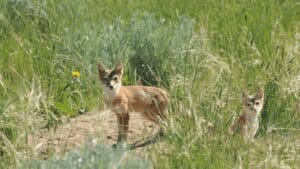
SPONSORED ADVERTISEMENT

